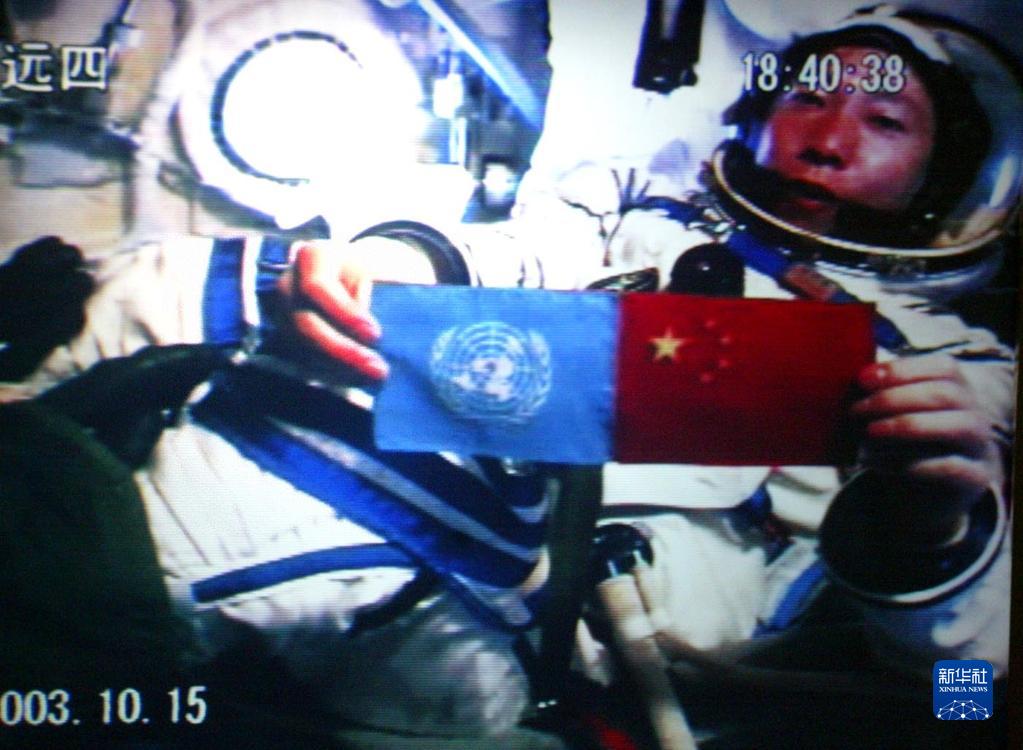Xinhua News Agency, Jiuquan, November 29 Title: Journalist’s Notes: China’s Dream of Flying to the Sky—Written on Successful Launch of Manned Shenzhou 15 Spacecraft
Xinhua News Agency reporter Huang Ming
At 11:08 pm on November 29, 2022, in northwest China, deep in the desert.
When the flame from the orange-red rocket’s tail pierced the vast night sky, the Shenzhou 15 manned spacecraft, supported by the Long March 2F Yao 15 carrier rocket, soared in the sky like a white dragon.
This is a moment destined to be recorded in the history of China’s aerospace industry.
At 18:40 on October 15, 2003, Yang Liwei, the first Chinese astronaut, greeted people around the world from space and displayed the five-star red flag and the United Nations flag side by side in the cabin (photographed on the large screen of the Beijing Aerospace Command and Control Center). Xinhua News Agency
This flight is the last flight before the completion of the Chinese space station——
The Shenzhou 15 manned mission is the last piece in the construction phase of the Chinese space station. In the boundless universe, the Chinese nation has marked a new height of flight.
This flight is a new starting point to start over with dreams——
This mission is also the first step in the application and development phase of the space station, which plays an important role in bridging the past and the future.
A new height, a new starting point. On this day ten years ago, it was the time the Chinese Dream was proposed.
On November 29, 2012, General Secretary Xi Jinping led the new central leadership to visit the “Road to Rejuvenation” exhibition at the National Museum, proclaiming China’s dream of the great rejuvenation of the Chinese nation to the world.
After more than six months, on June 24, 2013, during a phone call with the three Shenzhou 10 astronauts, Xi Jinping affectionately said that the space dream is an important part of the dream of strengthening the country. With the rapid development of China’s aerospace industry, the Chinese will make greater and greater strides in space exploration.
The commander’s warm concern is a strong country’s dream and an aerospace dream.
This dream has come step by step steadfastly from the patriotic dedication and self-improvement of Chinese astronauts from generation to generation——
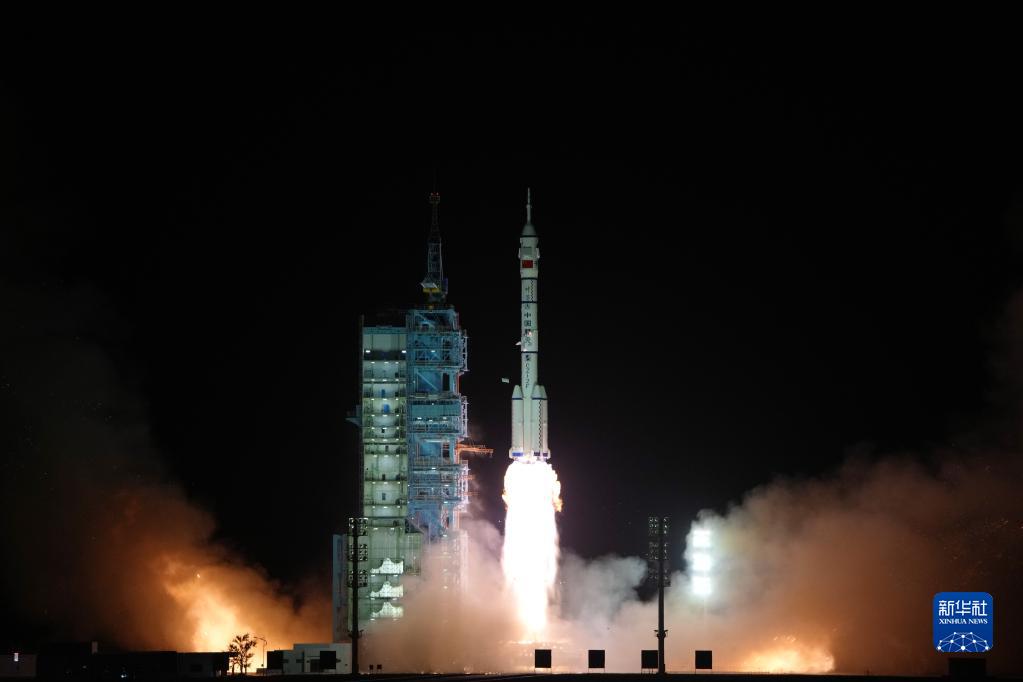
At 23:08 on November 29, the Long March 2F Yao 15 carrier rocket carrying the Shenzhou 15 manned spacecraft was ignited and launched at the Jiuquan Satellite Launch Center. About 10 minutes later, the Shenzhou 15 manned spacecraft and the rocket were successfully launched. Separation, entering the predetermined orbit, the astronaut crew is in good condition, and the launch was a complete success. Photo by Xinhua News Agency reporter Li Gang
Jiuquan Satellite Launch Center is the birthplace of my country’s aerospace industry.
Dongfeng Revolutionary Martyrs Cemetery, a few kilometers from the manned space launch site, is buried with more than 700 martyrs who have dedicated themselves to China’s aerospace industry since the establishment of the Jiuquan Satellite Launch Center in 1958.
In the Jiuquan Satellite Launch Center, where missions are launched frequently, that tradition has been maintained: Before each major launch, science and technology personnel from each test team will go to the Dongfeng Revolutionary Martyrs Cemetery to pay their respects to the martyrs.
Here is the spiritual home of Chinese astronauts and the place where the space dream sets sail.
In April 1970, my country’s first artificial satellite flew into space from here, and the music of “Dongfanghong” rang around the world.
In November 1999, the Shenzhou-1 unmanned spacecraft set sail from here, opening the curtain on China’s manned spaceflight. Since the establishment and implementation of China’s manned spaceflight project in 1992, Chinese astronauts have completed the journey that developed countries have taken 30 to 40 years in just 7 years.
In the golden autumn of 2003, China’s first manned spaceflight mission was a complete success here, and China became the third country in the world capable of sending astronauts into space on its own.
From Shenzhou 5 in 2003 to Shenzhou 15 in 2022, Chinese astronauts have visited the sky ten times from here.
The glory and dream of setting sail from the Gobi Desert, rising from the depths of the mountains and marching towards the sea of stars——In 1984, the Dongfanghong-2 experimental communication satellite was successfully launched at the Xichang Satellite Launch Center; in 2016, with Wenchang, Hainan, China Space launch site made its world debut and the curtain of the space laboratory flight mission kicked off…
One after another, dreams of flying to the great rejuvenation of the Chinese nation are flying far and wide.
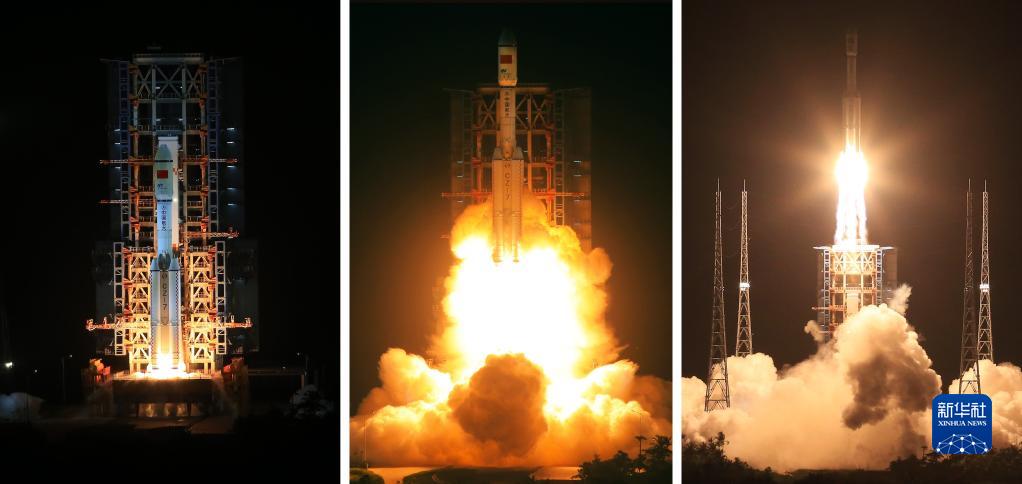
On June 25, 2016, the Long March 7 launch vehicle was ignited at the Wenchang space launch site in Hainan (composition photo). Photo by Xinhua News Agency reporter Li Gang
2016 is also the 60th anniversary of the founding of China’s aerospace industry. On April 24 this year, the theme of the first “China Aerospace Day” was “China’s Space Dream”.
The Chinese dream leads the aerospace dream and the aerospace dream helps the Chinese dream.
Since the 18th National Congress of the Communist Party of China, the Central Committee of the Party has attached great importance and concern to the development of the aerospace industry, and incorporated aerospace power building into the overall planning of the grand rejuvenation strategy of the Chinese nation . The construction of China’s space station completed a “Chinese-style leap” through unremitting exploration and innovation——
Chinese astronauts independently completed the entire process from designing, manufacturing and testing the Chinese space station, achieving a 2-hour autonomous fast rendezvous and docking of a cargo spacecraft for the first time, and setting a world record. by the astronauts it went from 15 days to six months…
The construction of the space station is an important milestone in China’s aerospace industry and will make a pioneering contribution to mankind’s peaceful use of space.
“From the launch of the Tianhe core module in April 2021 to the Shenzhou 15 mission, in 19 months, China’s manned spaceflight intensively implemented 11 launches, 2 spacecraft returns, 7 astronauts out of the cabin and 4 flights. A crew of 12 astronauts continued to remain in orbit, and the assembly and construction of the basic “T” configuration of the space station was completed on schedule. The whole process was connected and completed in one go. With a strong force, exhausted the acceleration of China’s aerospace development into the new era.” On November 28, 2022, Ji Qiming, spokesman of China manned spaceflight engineering and assistant director of China manned spaceflight engineering bureau, performed a manned flight over Shenzhou 15 Presented at the press conference of the mission
This is the height and miracle of China written by Chinese astronauts in the new era on the way to pursuing their dreams.
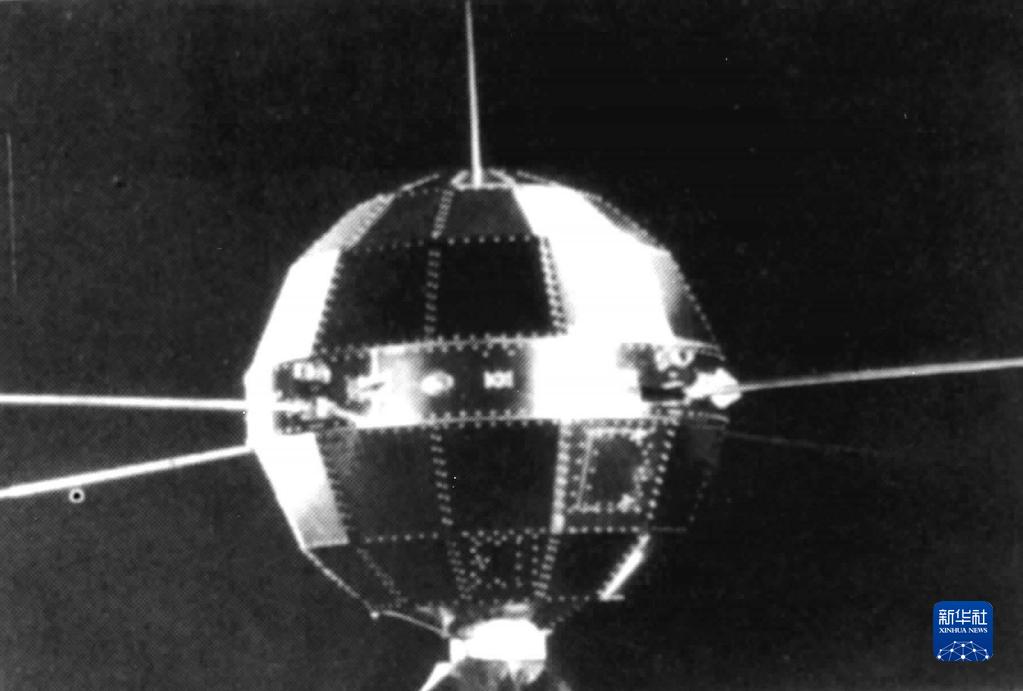
On April 24, 1970, my country successfully launched the first artificial satellite “Dongfanghong-1” with the Long March-1 carrier rocket (data photo). Xinhua News Agency
Today, with the successful flight of Shenzhou 15, Chinese astronauts have reached a new historical starting point on their long journey to the stars and the sea.
Today, towards the great rejuvenation of the Chinese nation, Chinese astronauts set out again with their dreams and will advance on the road of flying to the sky and write new glory.
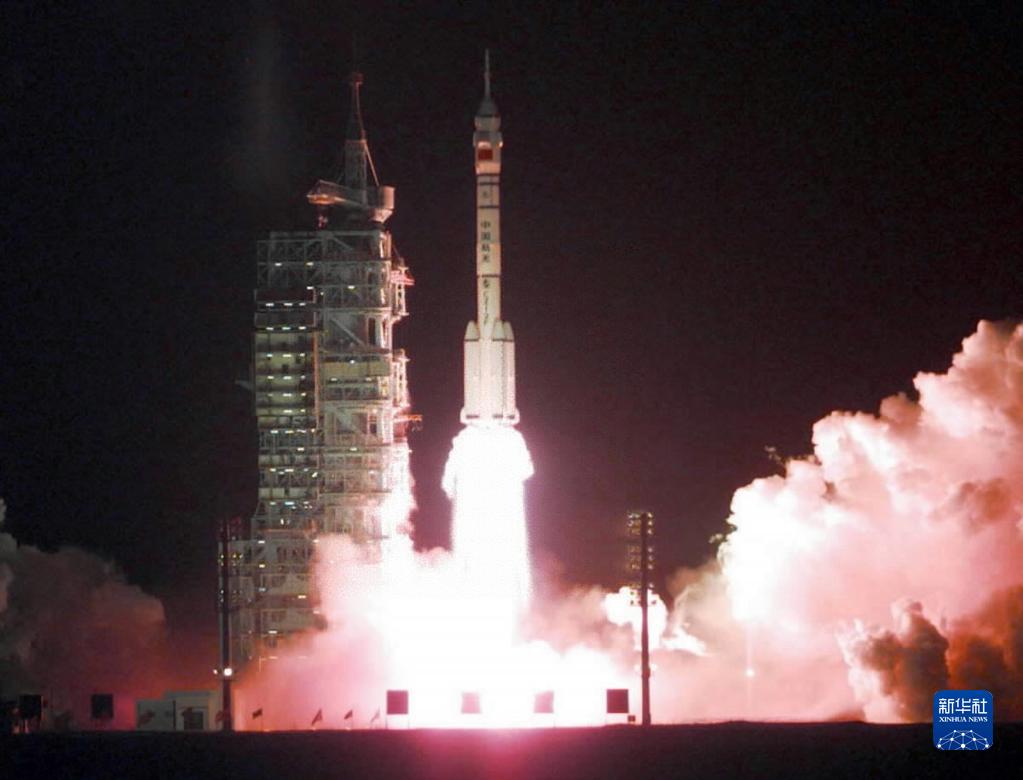
On November 20, 1999, Shenzhou-1, China’s first manned experimental spacecraft, was launched at the Jiuquan Satellite Launch Center. Xinhua News Agency
[
责编:杨煜 ]
